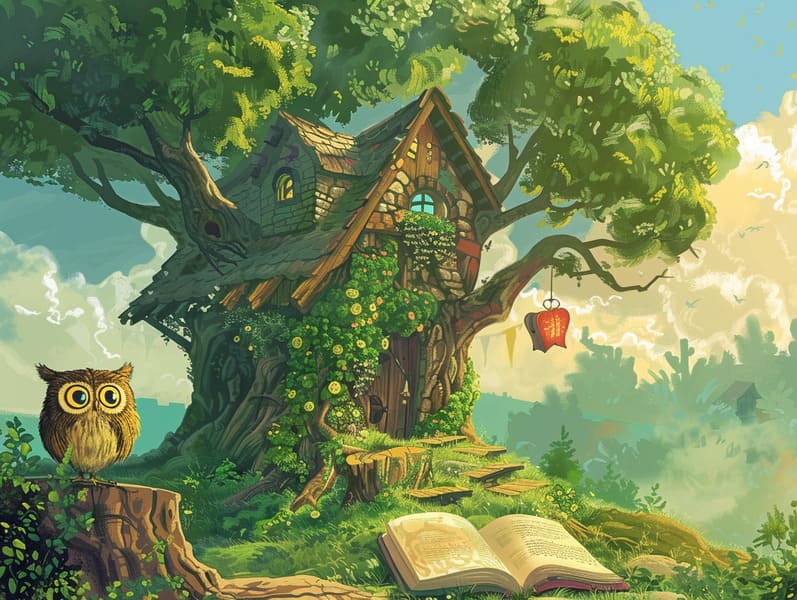
Best fairy tales have enduring presence. These stories have been told from one generation to the next centuries before they were ever inscribed. They emerged from a variety of societies, including Middle Eastern traditions. They were initially conveyed among grown-ups, often carrying themes and messages aligned with the societal norms and beliefs of the time.
The famous Grimm duo, the two Grimm brothers, were among the first to collect many of these beloved stories. Their volume, "Grimm's Fairy Tales," included classics like "Cinder Maid," "Hansel and Gretel," and "Snow-White and Rose-Red," which have since become staples in the world of classic fairy tales. Similarly, Hans Christian Andersen's magical fairy tales, such as "The Mermaid," and "The Ugly Duckling," have gained the love worldwide, guaranteeing their place in the pantheon of beloved fairy tales.
Though they are centuries old, classic fairy tales remain as meaningful as ever, especially as children's night stories. These fantastical tales are now available in different formats, including artistically illustrated books, fantastical animations, and internet fairy tales.
Their lasting appeal can be attributed to several fascinating points:
Significant Morals: Timeless fairy tales often illustrate important moral lessons. Fairy tales like "The Boy Who Cried Wolf" teach the significance of honesty, while "The Race of the Tortoise and the Hare" underline the values of tenacity and humbleness. These tales offer young readers clear distinctions between truth and falsehood, forming their moral compass in a subtle yet meaningful way.
Kindness and Comprehension: Ancient fairy tales frequently showcase personalities facing struggles and tests, fostering audiences to sympathize with their struggles and root for their triumphs. For instance, "Beauty and the Beast" teaches us the significance of valuing inner qualities to understand the real character of a person, cultivating perception and awareness.
Cultural Insights: Many fairy tales are infused with the cultural contexts from which they developed. Delving into these tales can provide intriguing perspectives into different social structures, building a sense of cultural awareness and understanding.
Creativity and Fantasy: The magical elements in classic fairy tales—magical kingdoms—stimulate children’s visions. These narratives lead readers to extraordinary realms, enhancing imaginative ideas and a sense of astonishment that endures a lifetime.
Classic fairy tales are not only charming but also didactic. They provide captivating tools in cultivating various mental and emotional abilities in young readers. When classic fairy tales are told out loud, they boost speaking abilities by offering new phrases and intricate sentence structures. This practice also cultivates auditory perception and mindfulness, as kids focus on every detail, prepared to see what happens next.
Furthermore, contemplating the themes and characters of old fairy tales can promote problem-solving abilities and evaluative skills. Young readers are taught to notice patterns, forecast, and understand cause and effect. These talks also contribute to young readers communicate their thoughts and feelings, fostering their emotional intelligence.
In today’s high-tech era, the availability of internet fairy tales has made these tales more acquirable than ever. Web platforms and digital apps offer huge assortments of Grimm's fairy tales that can be perused or played anytime, anywhere. Fairy tales spoken are particularly well-received, providing an entertaining method for young readers to savor these charming stories. Sound books and voiced videos take characters and settings to life, often accompanied by enchanting music and songs that improve the tale experience.
The enduring charm of ancient fairy tales lies in their ability to shift to present eras while sustaining their central values. Contemporary renditions of these stories often include more diverse protagonists and modern settings, making them meaningful to today’s audience. However, the main ideas of valor, understanding, and honesty remain unchanged, continuing to appeal to kids of all ages.
Ancient fairy tales also offer a sense of contentment and homeliness. They feature a orderly narrative with a evident beginning, middle, and end, often drawing to a here close with the conclusion of conflicts and the triumph of virtue over corruption. This reliability can be calming for little ones, sharing a sense of solidity in an inconstant world.
Classic fairy tales continue to captivate and coach new generations, maintaining their splendor and importance in modern society. As kids' bedtime tales, they confer a perfect blend of delight and instruction, supporting moral values, empathy, and creativity. The accessibility of online fairy tales and the in demand status of fairy tales voiced affirm that these old tales remain obtainable to new generations.
By preserving and making known these narratives, we continue to praise the rich tapestry of cultural heritage and cultural heritage. Whether you are seeing a colorful picture book, discovering a digital library, or listening to an spoken story, the grandeur of ancient fairy tales is always within reach. These stories highlight of the eternal power of narratives and its ability to unify us across generations and cultures.
If you are browsing a vividly illustrated book, browsing a virtual collection, or listening to an audio story, the charm of old fairy tales is always within reach.
These fairy tales remind us of the unwavering nature of fairy tales and its ability to link us across eras and regions, establishing a link that charms and informs alike.